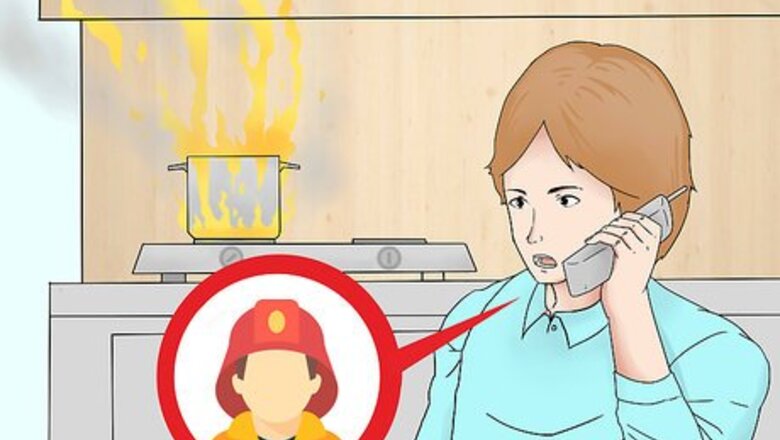
views
Snuffing out the Fire
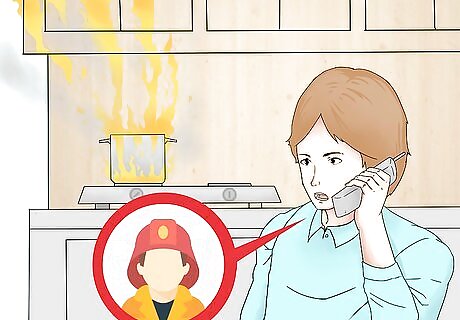
Evaluate the severity of the fire. If the fire is still small and contained to one pot, it is safe to extinguish it by yourself. If it's beginning to spread to other parts of the kitchen, get everyone assembled outside and dial for emergency services. Do not place yourself in the way of harm. Call emergency services if you're too afraid to go near the fire or don't know what to do. Do not risk life and limb to save a kitchen.
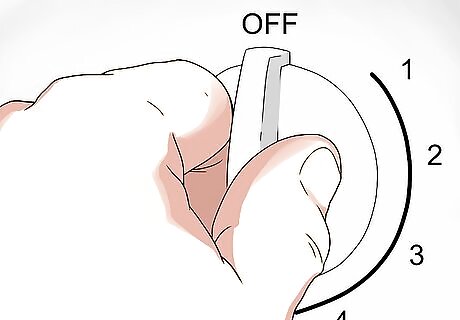
Turn off the heat on the stove immediately. This is your first priority, given that a grease fire needs heat to stay alive. Leave the pot where it is, and don't attempt to move it, as you may accidentally splash burning oil on yourself or your kitchen. If you have time, put on an oven mitt first to protect your skin.
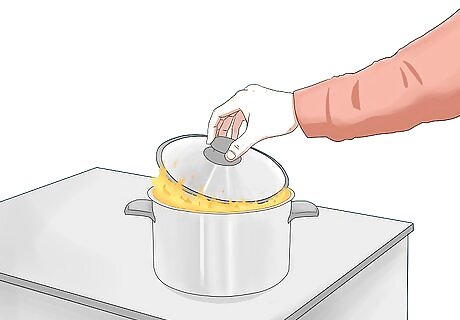
Cover the flames with a metal lid. Fire needs oxygen to continue, so covering it with a metal lid will essentially smother the flame. Place a metal pan lid or a cookie sheet on top of the fire. Do not use glass lids; they can shatter when exposed to fire. Also avoid using ceramic lids, bowls and plates for this purpose. These can explode and become dangerous shrapnel.
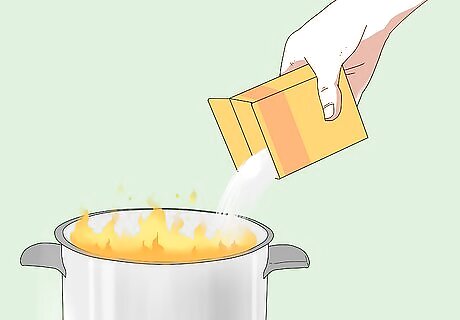
Dump baking soda on small fires. Baking soda will put out small grease fires, but won't work as effectively on larger ones. It will take a large amount of baking soda to get the job done, so grab the whole box and dump it generously on the flames until they're extinguished. Table salt will also work. If you can get your hands on that faster, use salt. Do not using baking powder, flour or anything other than baking soda or salt for this.
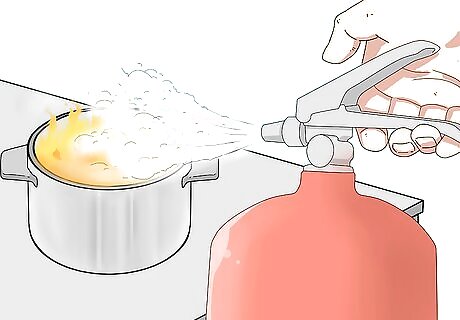
Use a chemical fire extinguisher as a last resort. If you have a Class B or K dry chemical fire extinguisher on hand, this can put out a grease fire. Since the chemicals will contaminate your kitchen and be tough to clean up, only do this as a last resort. However, if it's the last line of defense before the fire gets out of control, don't hesitate!
Avoiding Bad Procedures
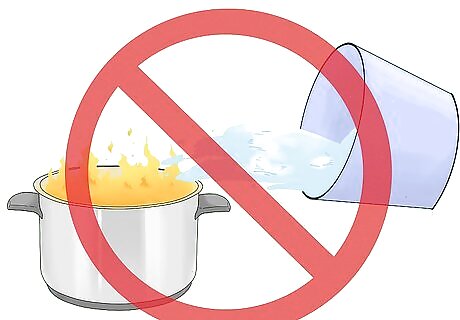
Never throw water on the grease fire. This is the number one mistake many people make with a grease fire. Water and oil don't mix, and throwing water on a grease fire can even cause the fire to spread.
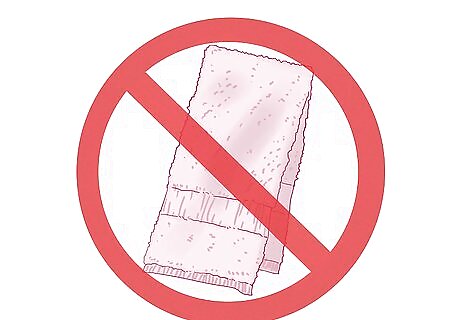
Don’t swat at a fire with a towel, apron, or any other fabric. This will fan the flames and spread the fire. The fabric itself could also catch on fire. Don't place a wet towel over a grease fire to snuff out the oxygen, either.
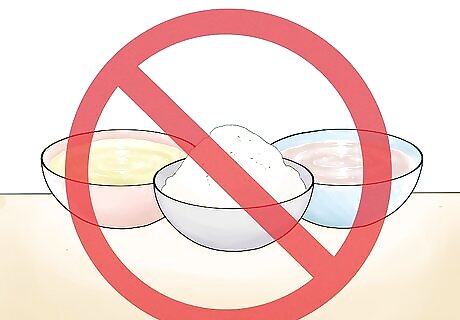
Do not throw any other baking product on the fire. Flour and baking powder may look similar to baking soda, but they won't have the same effect. Only baking soda and salt are safe and effective on a grease fire.
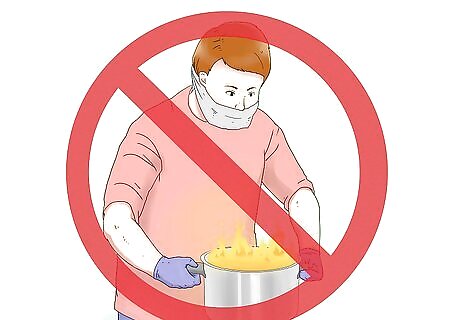
Do not move the pot or take it outside. This is another common mistake people make and it may seem logical at the time. However, moving a pot of burning oil can cause it to spill, potentially burning you and any other flammable objects it comes into contact with.
Preventing Grease Fires
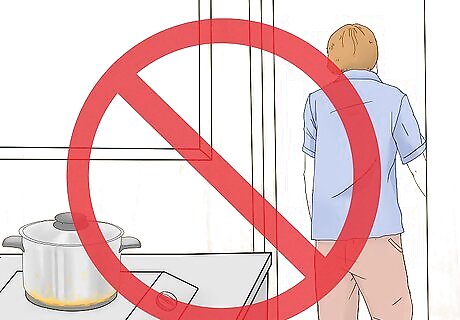
Never leave the stove unattended when cooking with oil. Unfortunately, most grease fires happen when someone steps away just for a moment. Grease fires can happen in less than 30 seconds, though. Don't turn your back on hot grease.
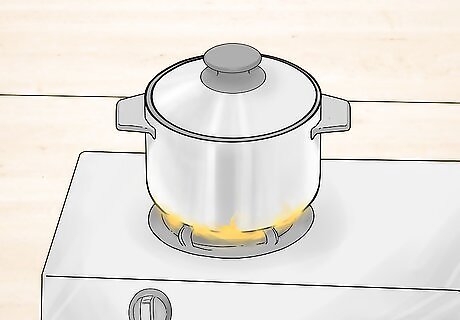
Heat oil in a heavy pot with a metal lid. Cooking with a lid both contains the grease and cuts it off from its would-be oxygen supply. A grease fire can still erupt with the lid on the pot if the oil is hot enough, but it's far less likely to happen.
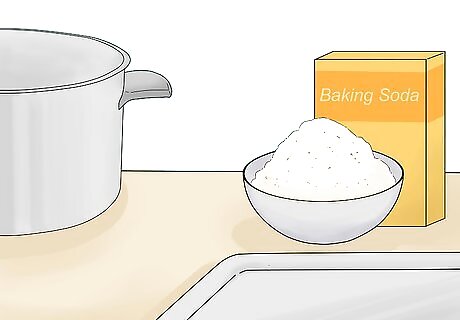
Keep baking soda, salt and cookie sheets nearby. Get into the habit of making sure these items are within easy reach when you're cooking with grease. If a fire erupts, you'll have at least three different ways to immediately snuff it out.
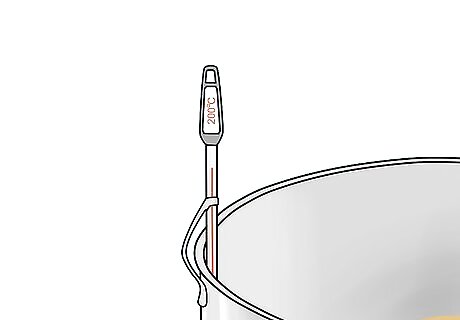
Clip a thermometer to the side to monitor oil temperature. Find out the smoking point of the particular oil you're using, then use a clip-on thermometer to monitor the temperature as you cook. If it gets to close to the smoking point, turn off the heat.
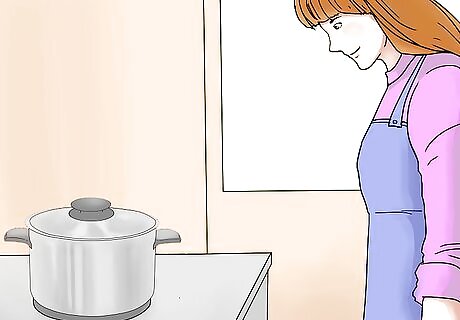
Watch for smoke and be aware of acrid smells. If you see wisps of smoke or smell something acrid while you're cooking with oil, immediately turn down the heat or remove the pot from the burner. The oil won't immediately catch fire once it starts smoking, but smoke is a danger sign that it's getting close to that point.




















Comments
0 comment